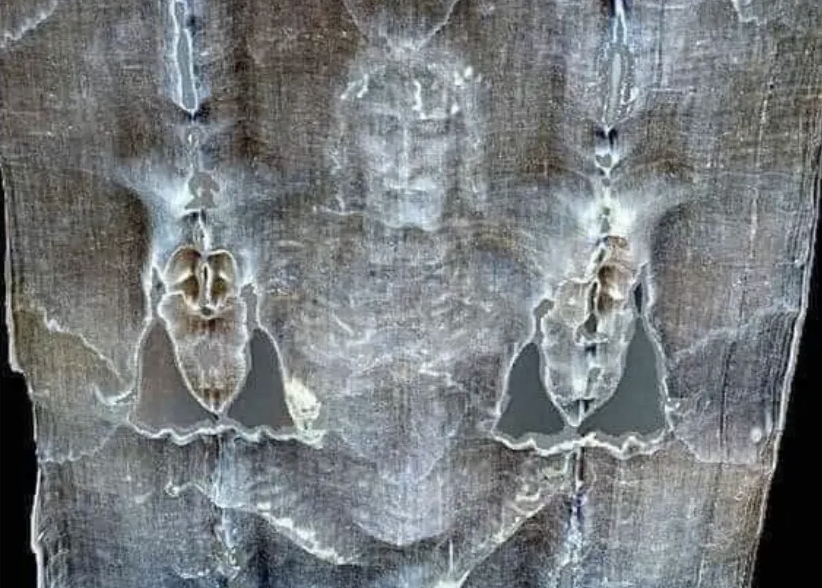Movie disclaimers started because of Rasputin

From Slate: "Virtually every film in modern memory ends with some variation of the same disclaimer: “This is a work of fiction. Any similarity to actual persons, living or dead, or actual events, is purely coincidental.” For that bit of boilerplate, we can indirectly thank none other than Grigori Rasputin, the famously hard-to-assassinate Russian mystic and intimate of the last, doomed Romanovs. It all started when an exiled Russian prince, Felix Yusupov, and his wife Irina sued MGM in 1933 over the studio’s Rasputin biopic, claiming that the American production did not accurately depict Rasputin’s murder. An MGM researcher had pointed out a factual discrepancy to the studio during production and warned that the Yusupovs could sue; the studio fired her. The jury found in Irina Yusupov's favor, and a justice in the case told MGM that the studio might have stood a better chance had they incorporated a disclaimer."
Humans have most of the biological tools to produce venom scientists say

From Science Alert: It's highly unlikely that people will join rattlesnakes and platypuses among the ranks of venomous animals, but new research reveals that humans do have the tool kit to produce venom - in fact, all reptiles and mammals do. This collection of flexible genes, particularly associated with the salivary glands in humans, explains how venom has evolved independently from nonvenomous ancestors more than 100 times in the animal kingdom. "Essentially, we have all the building blocks in place," said study co-author Agneesh Barua, a doctoral student in evolutionary genetics at the Okinawa Institute of Science and Technology in Japan. The team found a constellation of genes that are common in multiple body tissues across all animals that fertilize their eggs internally or lay eggs on land. Many of these genes are involved in folding proteins, Barua said."
The Shroud of Turin may have been created by exposing cloth to ultraviolet light

From Cross Dysfunctional: "Imagine this scenario: a monk or artisan notices that a linen curtain, after extended exposure to sunlight through a stained glass window, has taken on the pattern of the glass. In the post-crusades era, there was a massive market for holy relics, creating real demand for... let's call them "creative reproductions." I happened to have a UV-C bulb in my basement (as one does), so I ordered some raw linen from Amazon. A couple hours later... results! Clear evidence that UV light could create the effect we see in the Shroud. I ran a less dramatic test in my window using natural sunlight over about two days, confirming that UV-A (in a semi-shaded backyard in San Francisco) could produce similar results. The three-dimensional appearance likely came from a combination of the spacing between the mask pattern (think thickness of a glass sheet) and the sun's movement across the window throughout the day."
Hi everyone! Mathew Ingram here. I am able to continue writing this newsletter in part because of your financial help and support, which you can do either through my Patreon or by upgrading your subscription to a monthly contribution. I enjoy gathering all of these links and sharing them with you, but it does take time, and your support makes it possible for me to do that. And I appreciate it, believe me!
The chainsaw was originally invented to assist doctors in a difficult childbirth

From Science Focus: "The chainsaw as we know it appears to have begun life as a medical instrument – one used to assist in childbirth. Invented by Scottish doctors John Aitken and James Jeffray, it was originally designed as a “flexible saw… contrived to be used when there is ossification," according to 1785's Principles Of Midwifery, Or Puerperal Medicine. The crude chainsaw was designed to aid and speed up the process of symphysiotomy (widening the pubic cartilage) and the removal of disease-laden bone. The flexible saw, which later became the osteotome was used to cut away flesh, cartilage, and bone from the mother during childbirth if the baby became stuck in the birth canal. Fortunately, however, advancements in medicine have allowed us to move beyond symphysiotomy and the osteotome. Childbirth is now far safer and the caesarean section has become much more successful."
Brewed from old bread crusts, the world's oldest beer recipe is experiencing a revival

From the BBC: "An ancient recipe for Mesopotamian beer has survived the millennia to find new life as a modern drink, with a lower carbon footprint than many of its rivals thanks to its use of old bread crusts. When people first sipped on a frothy beer, the world looked different from today. The people who made it lived in Mesopotamia, in what is now southern Iraq. They were Sumerians, the earliest known civilisation in the region, who thrived in ancient cities around 4,000 to 6,000 years ago. An ancient recipe discovered etched into a clay tablet is written as a poem to Ninkasi, the goddess of beer. "Ninkasi, it is you who handle [the] dough with a big shovel, mixing, in a pit, the beerbread with sweet aromatics," it reads. "It is you who bake the beerbread in the big oven, and put in order the piles of hulled grain." The poem reveals that the beer they were drinking was made not only from the usual grains, yeasts and water – but also from bread."
A crow bathes in smoke to keep its feathers clean
collared crow using ash to keep feathers clean
— Science girl (@gunsnrosesgirl3) November 24, 2024
Corvids also smoke bathe to fumigate their feathers, ridding them of irritating parasites such as lice, mites and ticks.
pic.twitter.com/ENIeAPriKD
Acknowledgements: I find a lot of these links myself, but I also get some from other newsletters that I rely on as "serendipity engines," such as The Morning News from Rosecrans Baldwin and Andrew Womack, Jodi Ettenberg's Curious About Everything, Dan Lewis's Now I Know, Robert Cottrell and Caroline Crampton's The Browser, Clive Thompson's Linkfest, Noah Brier and Colin Nagy's Why Is This Interesting, Maria Popova's The Marginalian, Sheehan Quirke AKA The Cultural Tutor, the Smithsonian magazine, and JSTOR Daily. If you come across something interesting that you think should be included here, please feel free to email me at mathew @ mathewingram dot com



